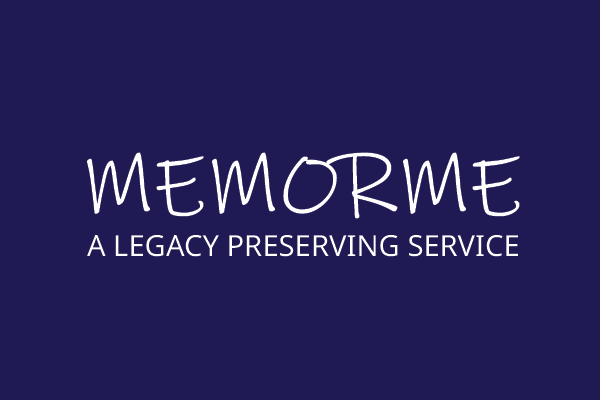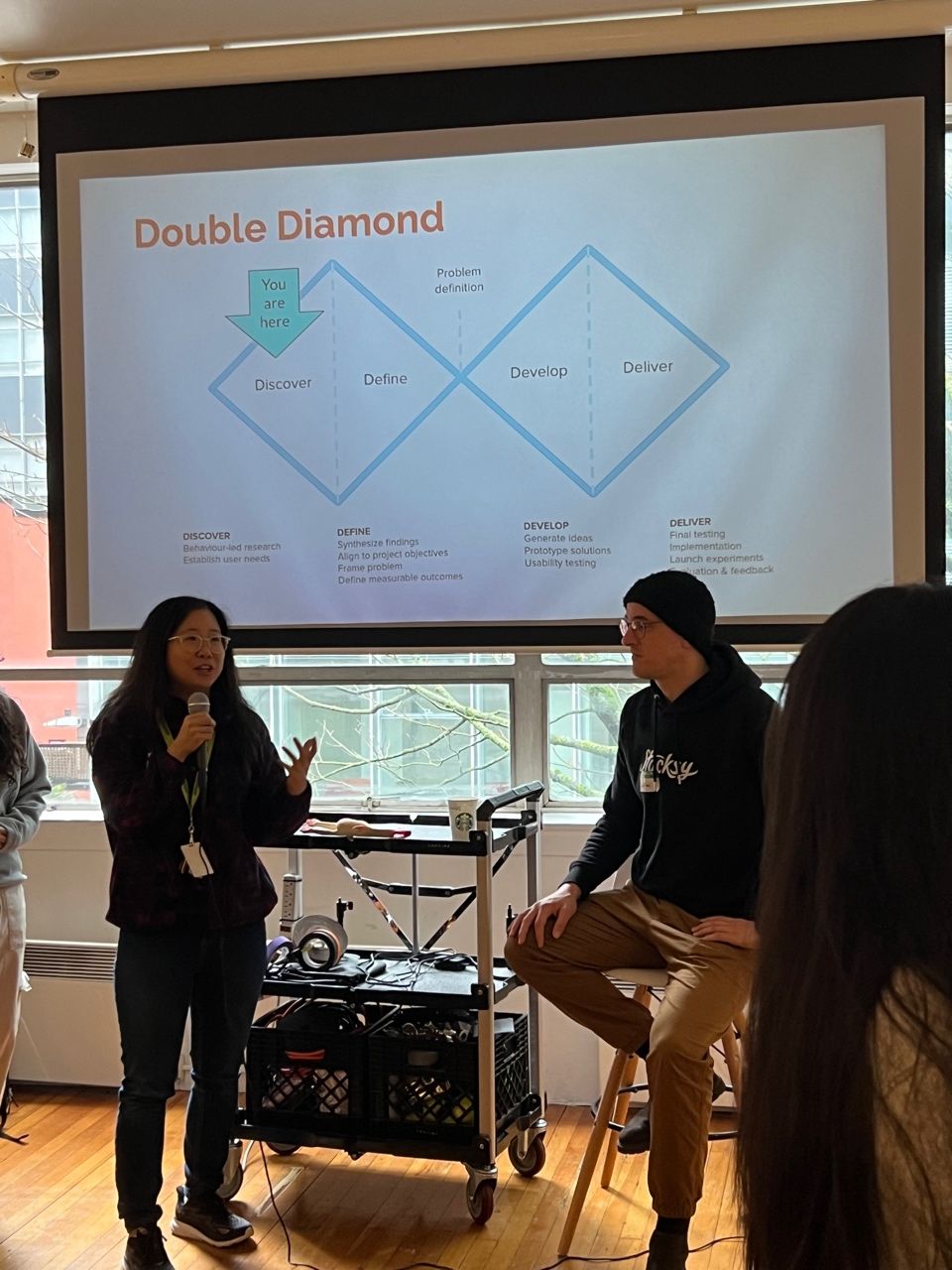
Project Summary
Memories are created through moments of heightened emotion such as traumatic events or triumphs over adversity. It can be triggered through our senses, allowing us to relive experiences both good and bad. As our world becomes more digitized through time, pieces of our lives become immortalized on different social platforms until we become a shell of who we personify online.
This service is to help re-align authenticity with their projected personas through digital and physical consolidation and storytelling through creative and expressive mediums.
MemorMe is a legacy preservation service created at the 2024 Global Service Jam.
Team Members: Ahana Roy, Jackie Ho, JoeMaricel Dayrit, Mor Karen & Teddy Prosser.
Project Details
Why Memories?
On the first day of the Global Service Jam after meeting everyone, we were shown a secret video theme to derive our service jam ideas from. All participants came together to write down our thoughts around the meaning behind the video and proceeded to group them into themes. Based on the themes, we collectively voted to see what themes were most popular through dotting and organized ourselves into the themes that resonated with us the most.
The theme that we had chosen as a group was Memories.
Group Discussion & Team Bonding
Before we start the process, we each discussed our own interpretations of what a memory was, as well as share a personal memory with each other.
This fostered a safe environment for ideas to flow and helps build trust within the team.
Design Process
At this service jam, we were introduced to utilize the Double Diamond Process, which breaks down into 4 distinct phases:

Double Diamond Design Process
DISCOVER
Understanding the issue by speaking and spending time with those who are affected by the issues
- Behaviour-led Research
- Establish User Needs
DEFINE
Allowing insights generated from discovery to help clearly define the challenge
- Synthesize findings
- Align to project objectives
- Frame problem
- Define problem
DEVELOP
Provide many solutions through co-designing with a range of different people.
- Generate Ideas
- Prototype Solutions
- Usability Testing
DELIVER
Testing out solutions at a smaller scale to reject solutions that will not work and improve on those that will.
- Final Testing
- Implementation
- Launch Experiments
- Presentation & Feedback
01 Discovery
10 Minutes of Question Generation
Using a timer of 10 minutes, we collectively wrote down questions on each sticky note and hid the questions from each other. This is to help speed up question generation and prevent ourselves from peeking and getting stuck on what to write.
Grouping Questions by Themes
We sorted the list of questions and determined the following to be the themes present:
- Tools & Methods
- Philosophy
- Forgetfulness
- Remembering for Others
- Specific Memories
We voted on 2 questions from each category and picked one question from each theme, broke off into smaller teams and onto the streets to gather insights from strangers. Having smaller groups help us not be as intimidating to strangers and are more likely to help us answer some of these questions.
Unstructured Interviews
Before we start any interview processes, we explain to the interviewees on the following:
- Why we are doing this?
- What are we trying to do?
- Managing expectations by telling how long it will take to do this.
After context is established, we proceed to gain consent if they agree to participate in the study. In the ideal situation, we would be doing this with a formal legal consent form. Due to limited resources and time, we opted to use a camera phone as a way to quickly gain consent from each interviewee. Videos are very useful tools as it allows you to recall information directly mentioned during the interview. It also allows data to be more objective and isn’t subject to personal interpretations via note taking.
With a camera phone out and recording, we would ask the following questions:
“Do you consent to being recorded for the purposes of research? Your answers is strictly for research purposes and will be be anonymous and confidential.” If they agree, we then proceed to ask the following open-ended questions.
Questions we asked our Interviewees
- Do you use any tools or methods to help you with your memories?
- Do you have any trouble with remembering things?
- Why are memories important?
- Do you often help others remember things?
- What is one memory that comes to mind immediately to you?
02 Define
Organizing & Distilling our Research
Themes that came out of the answers were:
- Feelings of regret and wanting to share that with others
- Memories are life changing milestones,
- Memories could be traumatic or events of overcoming adversity
- Memories are off-loaded and stored online
- Memories can be relived but from a different perspective.
Framing the Problem
By framing the problem concisely, we can develop solutions for this problem.
Who are our users?
- Seniors
What outcomes do we want?
Being able to tell their own personal stories before they are gone.
What are users trying to do?
The users want to teach the younger generations and avoid regrets before it’s too late. They may not be able to express themselves.
What will users get out of using this service?
A cohesive story that can be shared by family members and generational life lessons.
Is this part of a broader service?
This would be the primary service that is offered but can be combined with other services.
What are our key metrics?
Finished products after using our service.
What is our motivation? Why Now?
Baby Boomers are one of the largest demographics in the world that is in decline and they have a smaller window of time left. We want to be able to capture their stories before it is too late.
Final Problem Statement
Seniors are not able to share life lessons and stories for the next generation.
03 Develop
Given the limited time that we have, we generated two concrete ideas for our service, a digital and a physical service.
Idea #1: A digital service
A digital service, which allowed the user to consolidate their life into one space. We import all social media channels, cloud storage into one space. The tool allows you to sift through and build understanding around key events and periods of your life. The end result is a summarization of the user’s life and can be expressed into physical forms such as a novel, comic book, Vinyl and etc.
Idea #2: A physical service
An external service provided to senior homes to help seniors build their life story so that their legacy can be remembered by family and friends.
We opted to go with option #2.
04 Deliver
Creating a Story
Storytelling through Bodystorming service is a powerful way
Key Takeways & Reflection
What did I learn?
This event has opened my eyes to the need of more service designers in the world to help support businesses and government entities create a better brand experience through planning and organizing their resources for their employees.
What is Service Design in Practice?
- Service Design is holistic and focuses on the end-to-end experience.
- Service Design is a never ending processes.
- Service Design is the responsibility of an organization to maintain.
Show, Don’t tell
Showing a protoype allows others to experience the service and provides more clarity to the idea than just presenting a deck.
Learn by Doing, Not Talking
You get better by actively practicing and not just talk about it.